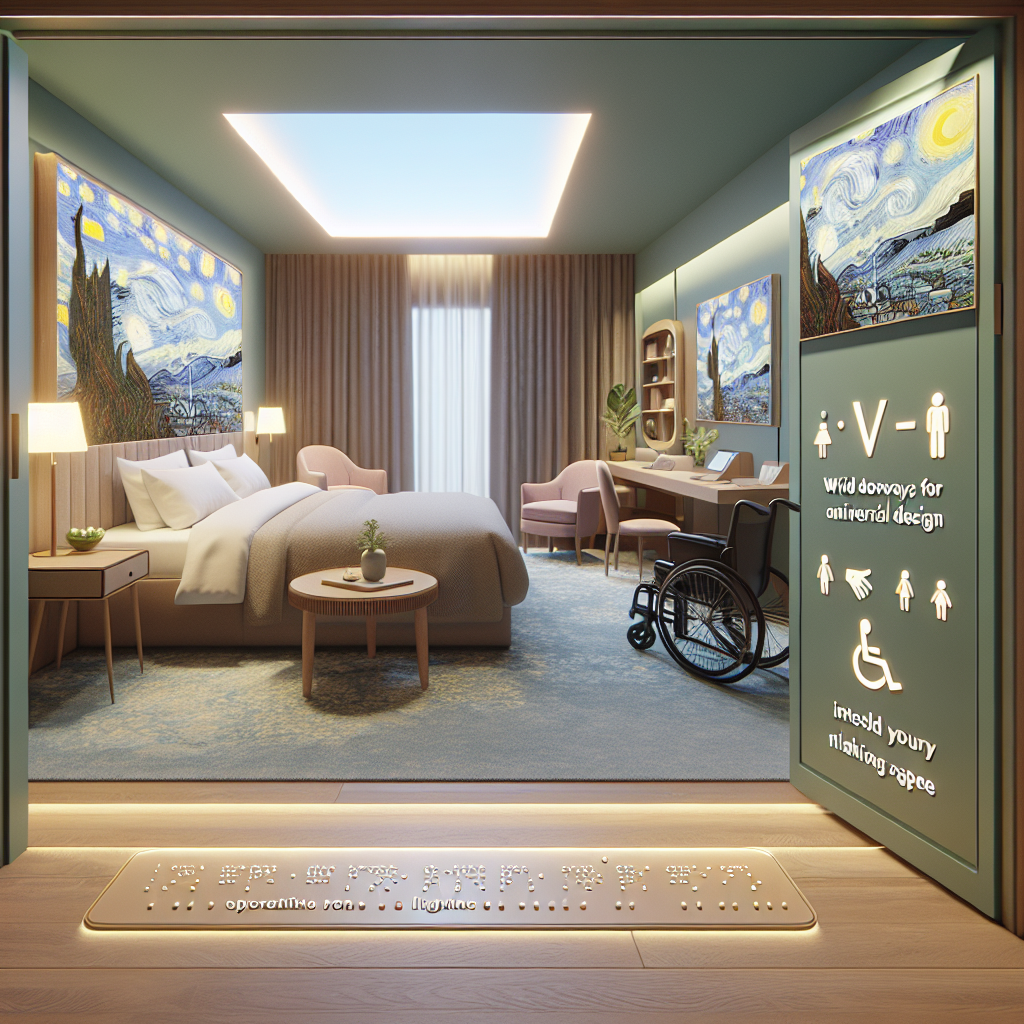
Have you ever wandered into a hotel room and felt an immediate sense of belonging—or perhaps the exact opposite? The design of hotel spaces can deeply influence our comfort and experience, yet often, they cater to a narrow audience, leaving many feeling like outsiders. From the uniform arrangement of amenities to the one-size-fits-all approach to comfort, traditional hotel room design has seldom embraced the rich tapestry of human diversity. But what if hotel spaces could be different? What if every room could tell you, “You are welcome here”?
When it comes to hospitality, the foundational principle is to offer a home away from home – a sanctuary where every guest feels welcomed, respected, and catered to. Achieving this requires that we delve into the fabric of hotel room design, ensuring that inclusivity is interwoven with every thread of hospitality. Accessibility is more than a buzzword or a mere compliance checklist; it is a mindset that, once embraced, can elevate the hotel experience for guests of all abilities.
Revolutionizing the Guest Experience with Sensory Design
Imagine stepping into a space that has been meticulously crafted to address a diverse array of sensory needs. A room where the lighting, acoustics, and even the textures of fabric contribute to an atmosphere of comfort and relaxation. For individuals with sensory sensitivities, such as those on the autism spectrum or with sensory processing disorders, the standard bustling hotel environment can be overwhelming. As we design rooms for the future, it is imperative that sensory-inclusive elements are prioritized.
This involves incorporating adjustable lighting systems that avoid harsh fluorescents, offering soundproofing solutions to buffer external noise, and choosing materials that are calming rather than irritating to the touch. Sensory-friendly rooms can also be equipped with visual aids, like picture menus or instruction cards, to help guests navigate their environment with ease. By creating a multi-sensory approach to room design, hotels can ensure every guest has the chance to relax and recharge in comfort.
Empowering Mobility for All Guests
The physical layout and amenities of hotel rooms can mean the difference between a frustrating obstacle course and an empowering space of independence for guests with mobility challenges. Critical design considerations must be made to create an effortless experience for those using wheelchairs, walkers, or other mobility aids. Wider doorways and spacious room layouts allow for easy navigation, while roll-in showers, grab bars, and lowered vanity areas make personal care activities accessible for everyone.
Moreover, investing in smart furniture that can be easily adjusted or removed can transform any standard room into a universally accessible haven. The incorporation of technology, such as voice-activated devices or apps that control room features, can render a room’s functionalities within reach of those with limited mobility, adding to the empowerment and dignity of the guest experience.
Bridging the Communication Gap with Technology
Communication is the heartbeat of hospitality, and ensuring that guests with hearing or vision impairments can communicate effortlessly with hotel staff is paramount. Innovations such as video relay services or interactive screens that provide sign language interpretation can break down barriers for deaf or hard-of-hearing guests. Rooms can include alarms and notification systems with visual alerts as well, providing safety and assurance.
For visually impaired guests, tactile indicators and braille signage are pivotal. Technology shines brightly here, too, with audio-assisted devices or smartphone applications that provide auditory guidance and descriptions of the room’s layout and amenities. Such thoughtfully integrated features enable all guests to access information and services independently, making their stay smoother and more enjoyable.
Fostering an Inclusive Atmosphere Through Attentive Service
True inclusivity in hotel design spills over into the realm of service. Staff training is instrumental in creating an environment where guests with varying abilities feel genuinely accommodated. This includes equipping hotel personnel with an in-depth understanding of how to communicate effectively and considerately with guests of all backgrounds, and ensuring they’re adept at responding to unique needs with empathy and resourcefulness.
Equally important is the availability of resources that can be requested by or recommended to guests based on their individual needs – from alert systems for those with hearing impairments to menus in braille or large print for those with vision challenges. Offering these options proactively signals to guests that their comfort and convenience are the hotel’s top priority.
The Ripple Effect of Inclusive Design
As the industry continues to evolve, the conversation around inclusive hotel room design extends beyond providing access. It’s about crafting a guest experience that not only accommodates but celebrates diversity. When guests from all walks of life can step into a hotel room that has been purposefully designed to meet a wide range of needs, the result is a profound sense of belonging.
At its heart, inclusive design champions the idea that when we design for disability, we enhance the experience for everyone. The smooth transitions, the intuitive technology, and the serene sensory environments that assist some actually add to the allure and appeal of the hotel for all. It represents a shift toward universality, absent of afterthought adaptations – a shift where the baseline for comfort is broadened, and the ultimate goal is to surpass expectations for every guest who walks through the doors.
As we continue to innovate and rethink the paradigm of hotel room design, we must always circle back to the fundamental question: does this space allow everyone to feel at home? With a commitment to expanding accessibility and a firm foundation built on the principles of inclusivity, the hotel industry is poised to offer unparalleled experiences embodied by a spirit of welcome that is felt universally. By addressing the needs of all our guests with creativity and compassion, we not only meet a standard – we define it.
















